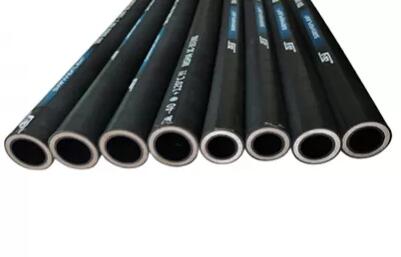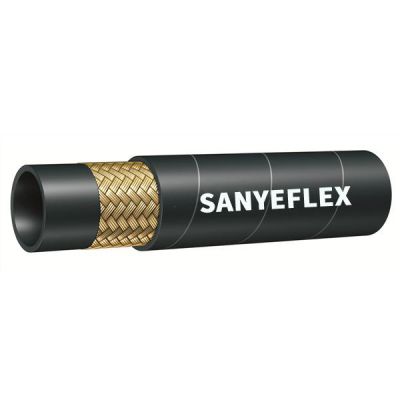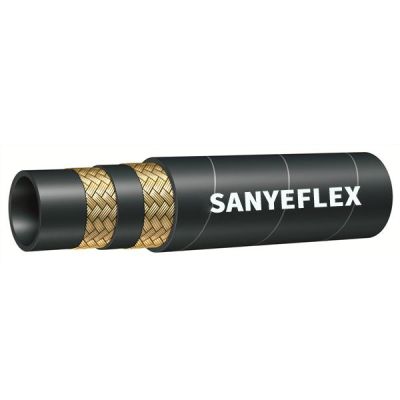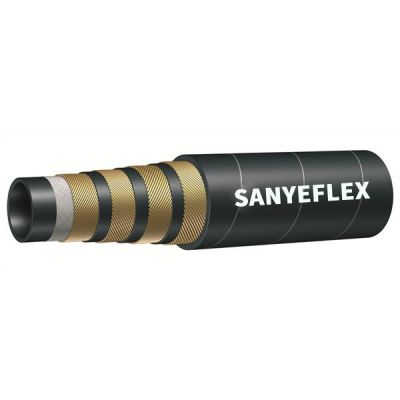Sep. 14, 2024
Choosing the right pilot hose is essential for ensuring optimal performance and safety in hydraulic systems. Super flexible series pilot hoses are designed to provide superior flexibility, durability, and resistance to various environmental factors. These hoses are commonly used in applications where space constraints and complex routing are a concern, such as in construction equipment, agricultural machinery, and industrial hydraulics. With so many options available, it can be challenging to select the best hose for your needs. This article will guide you through the key factors to consider when choosing super flexible series pilot hoses.

Pilot hoses are an integral part of hydraulic systems, used to transmit pilot signals to control valves and actuators. They operate under lower pressure compared to main hydraulic lines but still require high flexibility and resilience to withstand the demands of their specific applications. Super flexible series pilot hoses are designed to meet these requirements, offering enhanced flexibility and resistance to bending, twisting, and vibration.
The operating pressure and temperature of your hydraulic system are crucial factors when selecting a super flexible series pilot hose. Although pilot hoses typically operate at lower pressures than main hydraulic lines, it's essential to choose a hose with a pressure rating that exceeds the maximum pressure expected in your application. This ensures safety and longevity.
Temperature resistance is equally important. Hydraulic systems can operate in a wide range of temperatures, so choosing a hose with a suitable temperature range is essential to avoid premature failure. Super flexible series pilot hoses are often designed to withstand extreme temperatures, both hot and cold, making them suitable for various applications.
One of the primary advantages of super flexible series pilot hoses is their exceptional flexibility and small bend radius. This is particularly beneficial in tight spaces or applications where hoses need to be routed through complex configurations. When choosing a pilot hose, it's important to consider its minimum bend radius, which indicates how tightly the hose can be bent without kinking or reducing its lifespan.
A smaller bend radius allows for more versatile routing and easier installation, especially in confined spaces. Ensure that the hose you select can accommodate the routing requirements of your application without being stressed or overstretched.
The material and construction of the hose are critical to its performance and durability. Super flexible series pilot hoses are typically made from high-quality synthetic rubber or thermoplastic materials, which offer excellent resistance to abrasion, chemicals, and environmental factors such as UV radiation and ozone.
The reinforcement layers, often made from braided steel or synthetic fibers, provide additional strength and flexibility. The choice of material should be based on the specific environmental conditions the hose will be exposed to. For instance, if the hose will be used in a highly abrasive environment, look for a hose with enhanced abrasion resistance.
The compatibility of the hose with the hydraulic fluid used in your system is another key factor to consider. Different hydraulic fluids, such as mineral oil, synthetic oils, or water-based fluids, can have varying effects on hose materials. Using a hose that is not compatible with the fluid can lead to degradation, leaks, and ultimately hose failure.
Always check the manufacturer’s specifications to ensure the pilot hose is compatible with the fluid used in your application. Super flexible series pilot hoses are generally designed to work with a wide range of hydraulic fluids, but it’s crucial to verify compatibility for specific requirements.
The type of end fittings and connections used with the pilot hose should be compatible with your system’s components. The fittings must match the hose’s inner diameter and be securely attached to prevent leaks. Crimped fittings are commonly used with super flexible series pilot hoses due to their secure connection and resistance to vibration.
Ensure that the hose assembly, including the fittings, meets the pressure and temperature requirements of your system. It is also advisable to choose fittings made from corrosion-resistant materials, especially if the hose will be used in harsh environments.
Choosing the right super flexible series pilot hose requires careful consideration of several factors, including operating pressure and temperature, flexibility, material construction, fluid compatibility, and end fittings. By selecting a hose that meets these criteria, you can ensure reliable performance and longevity in your hydraulic system. If you have any questions or need assistance in selecting the right pilot hose, feel free to contact us. We are a trusted supplier of high-quality hydraulic hoses and fittings, and we are here to help you find the best solution for your specific application needs.
Our Customer
Tel.: +86 400 0318 111
Email: admin@sanyeflex.com
Add.: #218 Zhongke Street, High-tech Zone, Hengshui City, Hebei Province, China



